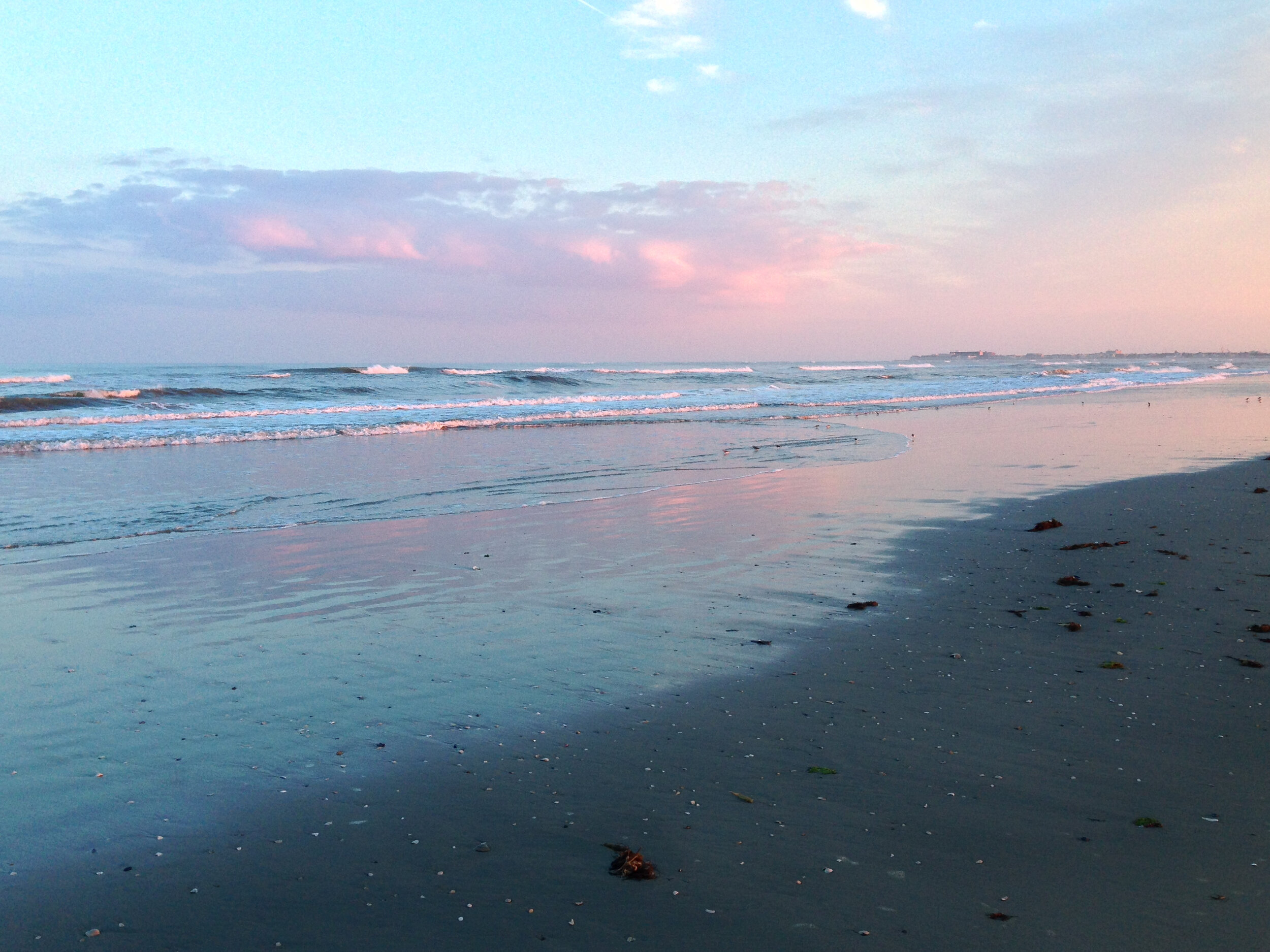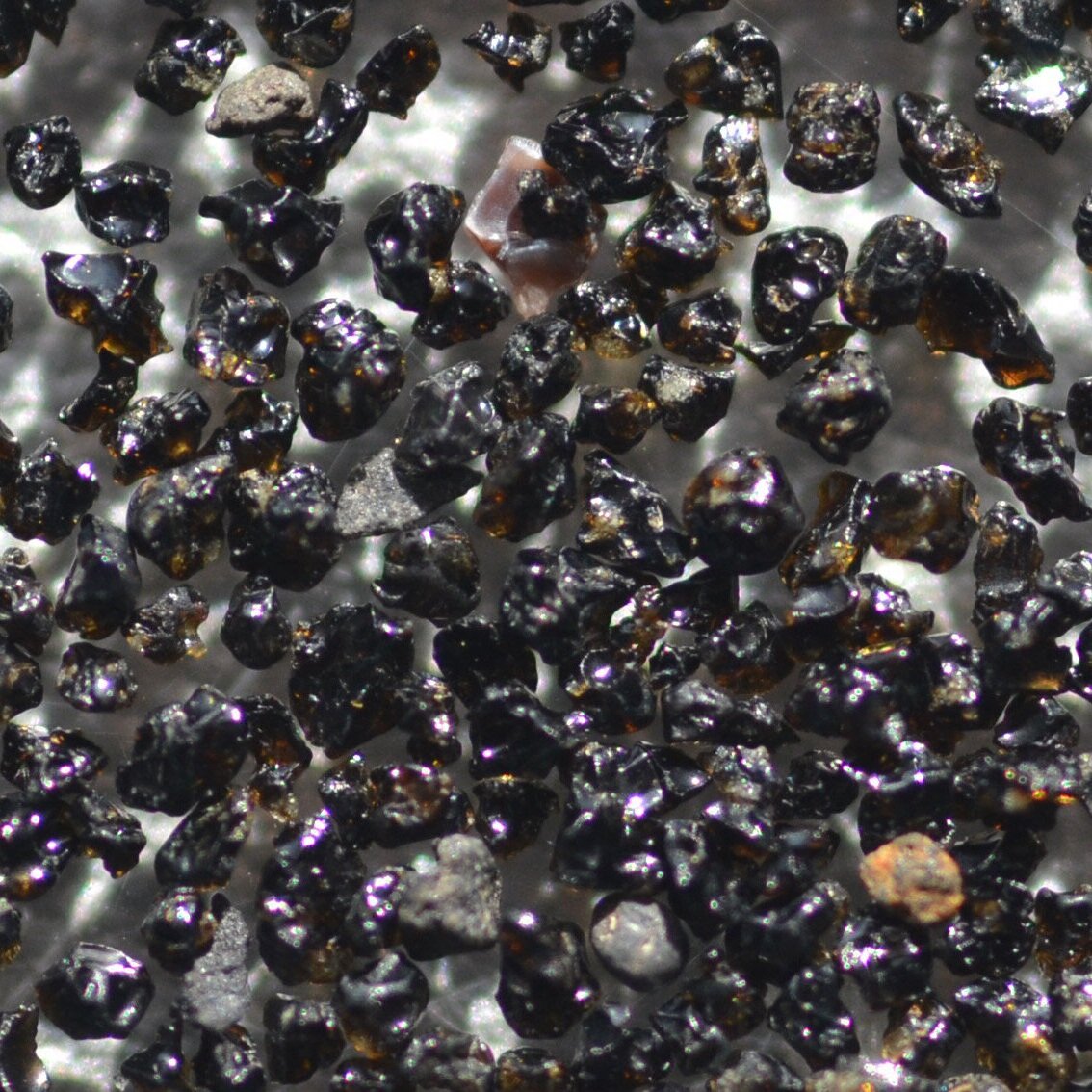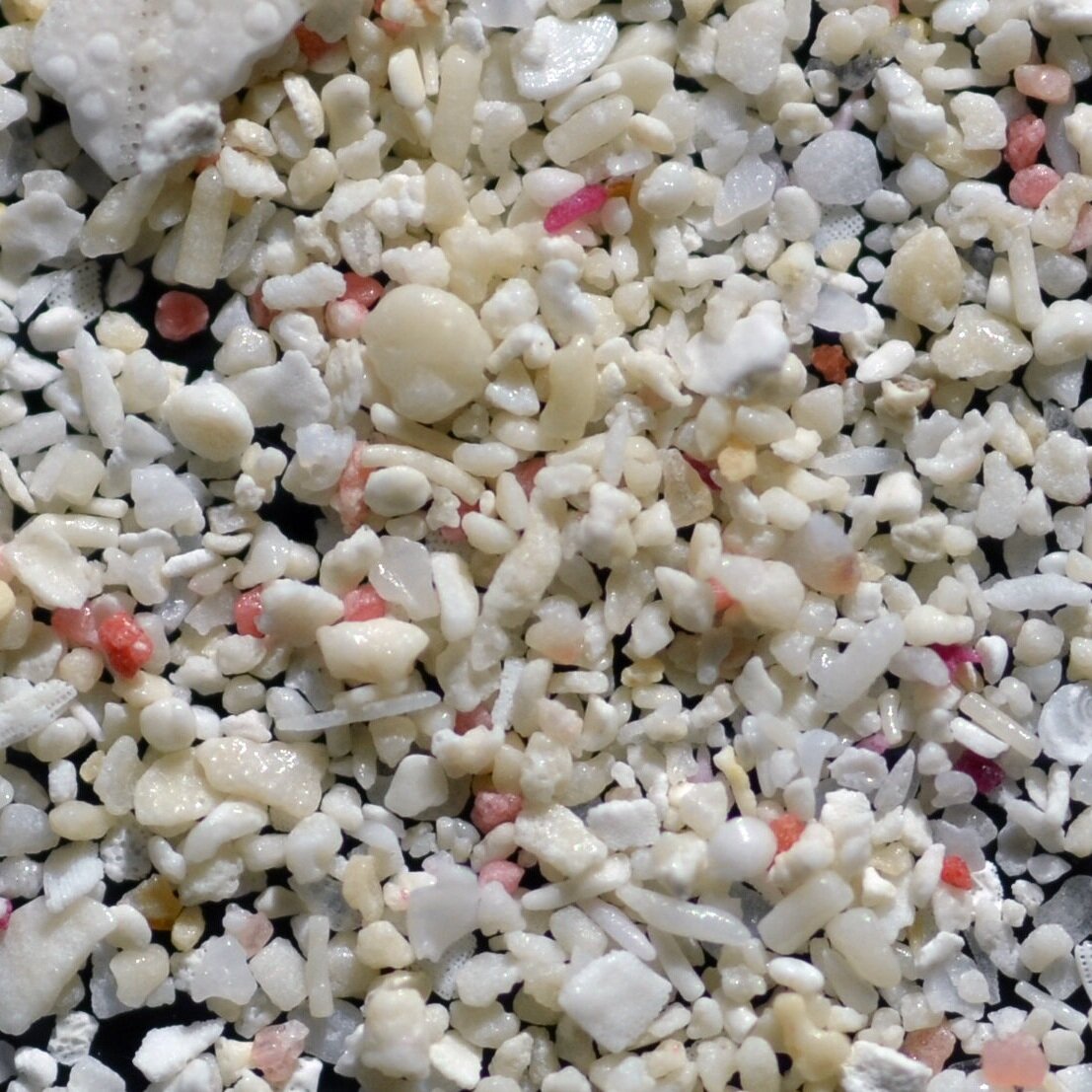The Secrets of Sand
Stone Harbor Point
Sand evokes wonderful memories. Burying your toes in the sand, sandy shoes on the back porch, building sand castles, or the glory of waves lapping up on the sand all have special meaning. The mere mention of the word “sand” can bring a smile to one’s face, a relaxing calm, and a longing for the shore.
Hidden on every sandy shore is a mystery waiting to be solved. Each shoeful of sand holds many secrets. The story of sand is remarkable. How far did it travel and through what lands did it pass? Did it come from a blazing volcano, a wave-battered coral reef, or an ancient mountain? Sands betray their complex history to a skilled sleuth. A careful observer can read this history and tell the source of the sand, the climate at its source, the distance it traveled, and the character of the place where it was found. A close look at sands from around the world reveals their basic origins and how they vary with differences in climate and energy.
There are four common sources for sand: weathering of continental granitic rocks; weathering of oceanic volcanic rocks; skeletal remains of marine life; and chemical grains precipitated from water. Each source supplies different basic building blocks that will be changed by their journey to the sea. Continental granitic rocks are rich in pink and white blocky feldspars, platy and shiny flakes of mica, and glassy spheres of quartz. The first step in granite weathering produces a blocky particle called grus, and each grus particle is composed of several crystals. Grus quickly breaks down to individual crystals as it starts its journey. Along the way, some minerals break down to become soil, while others become physically abraded, smoothed and polished. Physical abrasion gradually causes grains to smooth and become spherical. They may become polished or matted.
Quartz is the most stable mineral, so sands derived from weathering of granites gradually become enriched in quartz as the other grains are dissolved and broken down. This chemical purification or increase in maturity may require thousands of miles of travel and may take thousands of years! Some sands have their journey interrupted by millennia when they are deposited in an environment. Pure quartz sand beaches belie their history – they are made up of the very old and wise travelers. Usually, quartz sand beaches also include other minor mineral types. In granites, the minor minerals are visually darker and usually denser. The so-called heavy minerals are different for the different source rocks and can be used to trace sands back to their origins. On many beaches, heavy minerals are selectively concentrated and give rise to the beautiful streaking patterns found in the intertidal zones.
Mt. Desert Island, Maine - angular quartz (clear), pink feldspar, and polished shells.
Stone Harbor Point – fine sand, dominated by clear quartz, black shell bits and heavy minerals.
Venice Beach – weathered by long transport, round quartz, polished shell. Shark teeth added by weathering of ancient phosphate sands (black spheres) from central Florida
Punalui, Hawaii – fresh volcanic (basalt) glass from local source
On the East Coast of the United States, beach sands come from weathering of the various old mountains that extend in broken chains from Maine through the Appalachians. Grains are transported from these source areas by rivers until they reach the coast. Sands newly arrived on the shore include a mixture of minerals, and the grains are angular and unweathered. The journey then continues southward along the beach for thousands of miles.
A grain of sand on Seven Mile Beach has its origins somewhere to the north along the coast. It could have come down the Hudson River or it could have come from as far away as Maine. These well-traveled sands will be finer, rounded and dominated by quartz. Many sand grains on Seven Mile Beach are in the middle of their journey – merely bouncing on by, headed further south. The sand shoals of Hereford Inlet are an intermediate stop-off point for much of the sand on Seven Mile Beach. There it gets buried and shells of marine organisms get added to the mineral sands. Buried skeletons turn black as organic material embedded in the shells becomes chemically altered in an environment without oxygen. The blackened shells we find on our beaches are shells that have been returned to the beach from these older buried sands. Storms can erode these sands and shells and bring them back on shore, but more likely it is the work of the dredges that periodically mine these sand shoals and add a short excursion back north for some of the sand. Unfortunately, the sand is headed back south again on its long journey.
Some of the most beautiful and exotic beaches are composed of sands derived from volcanic rocks. The black basaltic rocks of volcanic eruptions are usually glassy because they cooled so quickly, robbing the crystals of time they need to grow. Basalts may contain some larger crystals if they were formed deeper in magma chambers from which erupting lava was derived. These crystals are usually chemically unstable and dissolve away quickly. In dry climates, however, unstable grains such as green olivine may survive in preference to the glassy rocks in which they were contained. The black sand beaches of Hawaii attest to the very young and close source of the rocks, while the green sands attest to very dry climates that preserve the unstable sands. Thus two beaches in Hawaii have very different sands.
Skeletal sands are derived from the shelly remains of organisms. Many invertebrate animals and some algae secrete calcium carbonate skeletons. These grains are usually born near where they are deposited so that their presence is a record of nearby environments. This is in contrast to sands weathered from granites and basalts. What they are largely determines what type of grains they will add to the beach. Skeletons may be large and durable (coral fragments) or fine and fragile (sea urchins or sand dollars). Many break down quickly after death so that they contribute only shell fragments or they dissolve away completely.
South Point, Hawaii – green olivine sands, weathered basalt (black) plus white shell
Big Pine Key - worn skeletal fragments transported from offshore reefs
Great Guana Cay, Bahamas – very fine, fresh skeletal material with polish including pink skeletal sands
Joulters Ooid Shoal, Bahamas – spherical grains called ooids
Calcium carbonate grains are physically less durable than most land-derived grains and their abundance on many beaches testifies to the tremendous amount of skeletal material being produced nearby. Calcium carbonate is more stable in tropical settings so that tropical beaches are better known for their skeletal sands. The beautiful pink sand beaches of Bermuda and the Bahamas are due to the inclusion of pink shells of small animals called forams common on the reefs.
Grains derived from chemical precipitation from water are a fourth type of material that can be found on beaches. In many saline inland lakes, water has evaporated enough for gypsum or even halite (salt) to precipitate. Normal ocean water only contains a concentration of salts sufficient to precipitate calcium carbonate. Warming ocean water on shallow tropical banks enhances this process.
The most important calcium carbonate grain type formed as a precipitate is the ooid. Ooids are important today along the margins of many carbonate banks most notably in the Bahamas, Arabian Sea and Red Sea. Miami and part of the Florida Keys are built on a ridge of a fossil ooid bank. Ooids are formed of concentric growth layers of precipitation made round by the constant movement on high energy shoals where they form.
Next time you are at the beach, take a moment to examine that sand between your toes. Take along a small magnifying glass and see what the handful of sand is trying to tell you. The biographies of the grains are waiting to be told to the careful observer.
White Sands, New Mexico – gypsum crystals form tablet-shaped grains
Higbee Beach, Delaware Bay – pebble beach with very round quartz grains (Cape May Diamonds) that come from eroding of 100,000-year-old dunes












